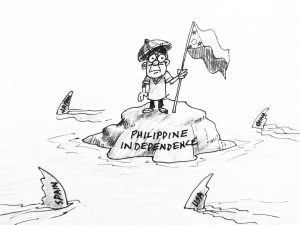Our independence, celebrated every 12th of June, is a fundamental aspect of the nation’s identity, symbolizing sovereignty and self-determination. That journey was a long and arduous one, marked by a series of stains that tarnished the country’s struggle for freedom. These stains, brought about by external forces and internal conflicts, have continued to impact the nation’s quest for true independence.
The first stain on Philippine independence can be attributed to the Spanish colonial rule that lasted over 300 years. The oppressive and exploitative nature of Spanish colonization hindered the country’s growth and development, stifling any attempts at self-governance. The Filipino people were subjected to harsh treatment and discrimination, leading to widespread poverty and inequality. Despite numerous uprisings and revolutions, it was not until the Treaty of Paris in 1898 that the Philippines was officially ceded to the United States, marking the end of Spanish rule.
The second stain on Philippine independence came with the arrival of American forces, who quickly established their form of colonial rule over the country. While the Americans promised liberation and democracy, their true intentions were to exploit the Philippines for its resources and strategic location. The Filipino people once again found themselves under foreign domination, this time by a new imperial power. The struggle for independence continued, culminating in the Philippine-American War from 1899 to 1902, in which thousands of Filipinos lost their lives in the fight for freedom.
The third stain on Philippine independence can be seen in the dark period of Japanese occupation during World War II. The invasion of the Philippines by Japanese forces in 1941 brought about a new wave of oppression and brutality, with widespread destruction and loss of life. The Filipino people were once again subjected to foreign rule, this time by a ruthless and oppressive regime. The resistance movement against the Japanese occupation, led by Filipino guerrilla fighters and supported by American forces, played a crucial role in eventually liberating the Philippines from Japanese control.
Despite gaining formal independence from the United States in 1946, the stains of colonialism and foreign intervention have continued to haunt the Philippines. The legacy of Spanish, American, and Japanese rule still lingers in the country’s institutions and social fabric, shaping its political landscape and economic development. The struggle for true independence and self-determination remains an ongoing challenge for the Filipino people, as they continue to grapple with the stains of their past and strive towards a future of peace, prosperity, and freedom.




